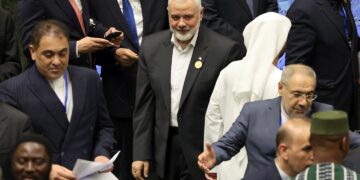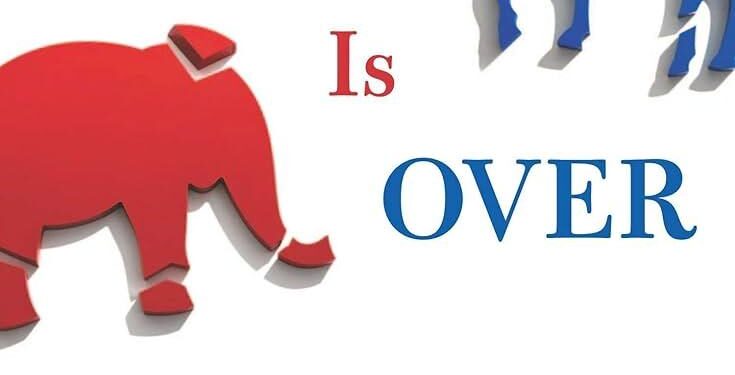Political Tensions Rise as GOP Proposes Spending Cuts
The political arena in the United States is witnessing a pivotal moment as Republican lawmakers introduce their proposals for spending reductions. This initiative has ignited a fierce political confrontation, with the GOP aiming to tighten government spending while Democrats prepare to mobilize their supporters and critique the potential fallout from these austerity measures. As discussions about budget allocations intensify, party leaders are gearing up to steer the dialogue towards issues of social welfare, economic fairness, and the long-term consequences of slashing public funding. This article examines how Democrats are responding to the Republican fiscal agenda and outlines both parties’ preparations for an essential electoral battle on the horizon.
Democratic Response to GOP Spending Cuts
In light of proposed cuts by Republicans, Democratic strategists are developing a counter-narrative that underscores how these reductions could adversely affect critical voter groups. By spotlighting sectors likely to experience significant impacts—such as education, healthcare, and infrastructure—Democrats aim to raise awareness about the ramifications of decreased funding. This approach seeks to resonate emotionally with constituents who may be directly affected by diminished government support, thereby energizing grassroots movements and increasing voter turnout in forthcoming elections.
Key points emphasized by Democratic leaders include:
- Effects on Middle-Class Households: The proposed cuts threaten to exacerbate financial difficulties for families dependent on government assistance.
- Concerns Over Public Safety: Reductions in law enforcement budgets could lead to increased crime rates and insecurity within communities.
- The Future of Economic Growth: A decrease in infrastructure investment may hinder job creation efforts and slow down economic recovery initiatives.
| Cuts Proposed | Potential Consequences |
|---|---|
| Funding for Education | A rise in tuition fees coupled with limited access to educational resources |
| Healthcare Initiatives | A reduction in access to vital medical services for low-income individuals |
The Democratic Party believes that harnessing public sentiment around these pressing issues can transform spending cuts into a rallying point for voters. They aim not only to position themselves as defenders of essential services but also seek opportunities amid growing scrutiny faced by key Republican figures regarding their fiscal policies. As developments unfold, this ideological clash over budgetary matters is expected not only to influence voter perceptions but also shape electoral strategies leading up to upcoming elections.
Impact of Fiscal Cuts on Voter Demographics
The proposed fiscal reductions from Republicans are anticipated to have widespread repercussions across various segments of American society—particularly among key demographics that Democrats hope will engage actively during elections. Groups such as,,and, who often depend heavily on governmental programs for basic needs; any cutbacks could trigger substantial backlash against those advocating such measures. For example, slashes in social safety nets like food assistance or healthcare subsidies might impose additional hardships on already struggling families—a situation that could empower Democrats’ narrative positioning them as champions defending crucial programs against impending budget constraints.
This scenario extends its implications into employment sectors where many voters have vested interests; education funding cuts risk alienating younger voters while workforce development program reductions might deter swing voters concerned about job security levels within their communities. An analysis reveals several areas where voter concerns lie:
| User Group | User Concerns |
|---|---|
This shifting landscape presents an opportunity for Democrats strategically positioned against austerity measures potentially reigniting support among demographics feeling neglected recently due changes made at federal levels regarding budgeting priorities overall! By emphasizing risks posed through suggested cutbacks effectively mobilizing these groups they can shift narratives surrounding responsible finance towards one focused more heavily upon equity & support systems designed specifically aimed toward vulnerable populations!
Strategic Messaging Recommendations Against Republican Budget Plans
If Republicans proceed with significant expenditure reductions it becomes imperative that Democrats frame messaging accordingly! Highlighting potential effects experienced daily by average Americans will help garner public backing! Key focal points should include:
- Safeguarding Social Services: Emphasize how suggested cutbacks jeopardize vital programs like Medicare/Social Security/Education Funding!
- Investments In Our Future: Stress importance maintaining investments related Infrastructure/Green Energy initiatives which create jobs stimulate growth economy overall!
- Equity Justice: Advocate policies promoting social equity ensuring no disproportionate impact felt amongst marginalized communities!
Moreover utilizing data visual aids enhances message resonance significantly! Presenting tables contrasting anticipated negative outcomes resulting from budgetary restrictions versus projected benefits derived continued expenditures provides stark visual representation illustrating disparities clearly! Below encapsulates comparisons succinctly:
| Consequences Of Spending Cuts | |
|---|---|
Conclusion: Preparing For Political Showdown Ahead Of Elections!
As Republicans unveil plans outlining intended expenditure decreases it sets stage ripe opportunity democrats leverage current climate favorably amidst rising concerns surrounding possible adverse effects impacting essential social programs directly affecting lives everyday citizens alike! With leadership prioritizing investments education/healthcare/infrastructure clear alternative emerges prioritizing community welfare over mere financial metrics alone paving way contentious debates shaping future political landscapes leading next election cycles ahead observers keenly await developments unfolding determining whether strategies resonate effectively influencing party dynamics national priorities years come!













![[News] Japan Develops 10nm Nanoimprint Technology, with Potential to Tackle EUV Bottleneck – TrendForce](https://earth-news.info/wp-content/uploads/2025/12/329851-news-japan-develops-10nm-nanoimprint-technology-with-potential-to-tackle-euv-bottleneck-trendforce-360x180.jpg)






![[News] Japan Develops 10nm Nanoimprint Technology, with Potential to Tackle EUV Bottleneck – TrendForce](https://earth-news.info/wp-content/uploads/2025/12/329851-news-japan-develops-10nm-nanoimprint-technology-with-potential-to-tackle-euv-bottleneck-trendforce-350x250.jpg)










![[News] Japan Develops 10nm Nanoimprint Technology, with Potential to Tackle EUV Bottleneck – TrendForce](https://earth-news.info/wp-content/uploads/2025/12/329851-news-japan-develops-10nm-nanoimprint-technology-with-potential-to-tackle-euv-bottleneck-trendforce-120x86.jpg)